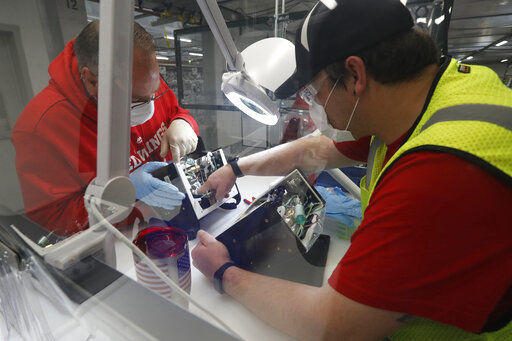WASHINGTON (AP) — U.S. manufacturing improved again in July with a key gauge of activity rising further into expansion territory.
The Institute for Supply Management, an association of purchasing managers, said Monday that its manufacturing index rose to 54.2 last month, up from a June reading of 52.6. Any reading above 50 signas that U.S. manufacturing is expanding.
The index dipped below 50 in March, indicating a recession in manufacturing as the coronavirus pandemic shut down factories. The overall economy fell into a recession in February and the government reported last week that the gross domestic product plunged at an annual rate of 32.9% in the April-June quarter, the biggest drop on records going back to 1947.
While it was the second straight month that the index has been above the 50 threshold, indicating manufacturing is expanding again, economists cautioned that the outlook is clouded by spreading infections in the U.S. in the South, West and Midwest.
“Manufacturing is recovering from low levels and the outlook is uncertain, given the threat of repeated disruptions from virus outbreaks,” said Rubeela Farooqi, chief U.S. economist at High Frequency Economics.
Timothy Fiore, chair of the ISM manufacturing survey committee, said it was encouraging that positive comments from survey participants were running two to one ahead of more cautious comments.
The index tracking new orders posted a strong gain of 5.1-percentage points from the June reading while the production index was up 4.8 percentage points. The orders backlog index was also up.
Of 18 manufacturing industries, 13 reported growth in July led by wood products and furniture and related products. The three industries reporting contractions in July were transportation equipment, machinery and fabricated metal products.
“The health and economic crisis are inextricably linked and the economic recovery cannot be ensured until the impact of the virus is contained,” said Oren Klachkin, lead U.S. economist for Oxford Economics. “We expect manufacturing to grow gradually ahead with botched management of the pandemic and ongoing virus-related uncertain set to constrain activity.”


